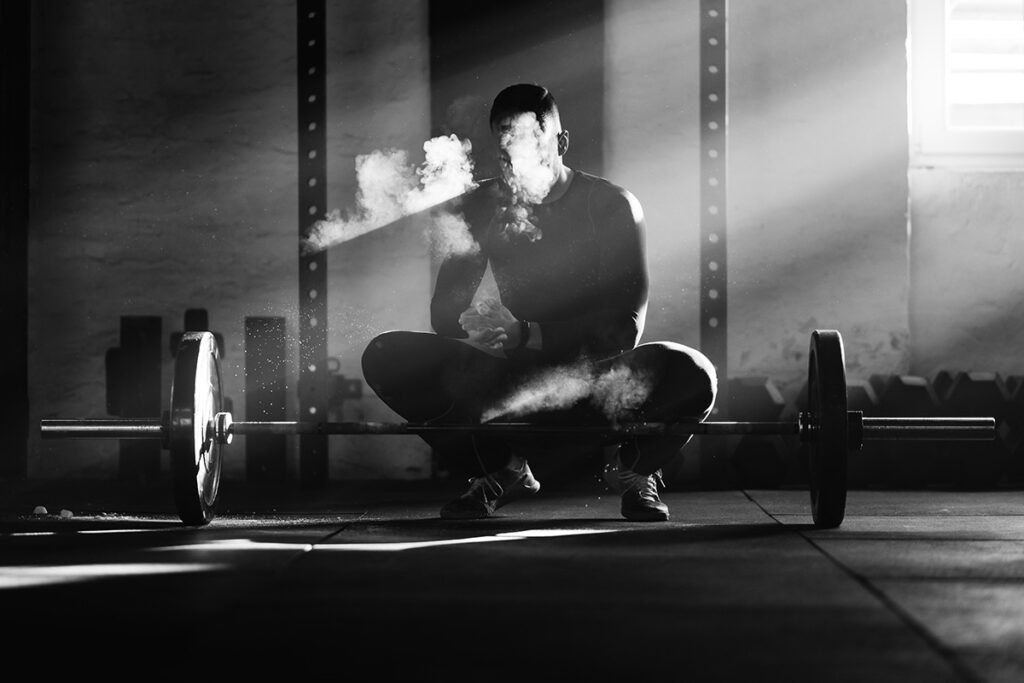

Overuse injuries, as the name suggests, result from excessive wear and tear on the body, particularly in areas subjected to repetitive strain. Unlike acute injuries that arise from a single traumatic event, overuse injuries manifest gradually over time. Recognising the early signs and symptoms can aid in timely intervention and effective prevention. This article delves into the intricacies of overuse injuries and offers guidance on avoiding them.
Overuse injuries, sometimes termed “cumulative trauma disorders,” arise when there’s a mismatch between the damage inflicted on a body part – be it a muscle, tendon, or joint—and the body’s ability to repair that damage. This mismatch occurs when repeated stress or strain is applied to a specific tissue or joint without allowing for adequate recovery time, ultimately leading to structural damage or functional disruptions. While athletes, particularly those in high-intensity sports, are often at the forefront of discussions about overuse injuries due to the rigorous demands of their training and competition, it’s crucial to recognise that these injuries can afflict anyone. Individuals engaged in occupations or hobbies that involve repetitive motions, like typing, playing a musical instrument, or even certain crafting activities, are also susceptible to these types of injuries.
Overuse injuries can arise from a combination of factors:
Training Errors: One of the leading causes of overuse injuries, particularly in athletes and fitness enthusiasts, is training errors. This typically involves an abrupt or drastic increase in the intensity, duration, or frequency of an activity without giving the body adequate time to adjust. Whether it’s adding too many miles to a running regime in a short period, lifting weights that are too heavy without proper progression, or suddenly engaging in high-intensity workouts without a proper foundation, such rapid changes can overwhelm the body’s recovery mechanisms, leading to strain and potential injury. It’s essential to follow a gradual and structured training progression to reduce the risk of overexerting and damaging tissues.
Equipment Issues: An often-overlooked contributor to overuse injuries is the use of inappropriate or worn-out equipment, especially footwear. For instance, running or training in old shoes that have lost their cushioning can cause undue stress on the joints and tissues, leading to potential injuries. Similarly, using equipment that’s not tailored for a specific activity or body type can alter mechanics and place undue strain on certain body parts. Whether it’s an athlete with ill-fitting gear or a worker using suboptimal tools for repetitive tasks, it’s crucial to ensure that the equipment in use is in good condition and appropriate for the activity at hand. Regularly inspecting and updating equipment can play a significant role in injury prevention.
Biomechanical Issues: Proper body alignment and movement techniques are vital for preventing injuries, especially during repetitive or strenuous activities. Poor posture or technique not only reduces efficiency but also places abnormal stress on muscles, joints, and ligaments. For instance, an athlete with improper running mechanics might overload certain parts of their legs, leading to medial tibial stress syndrome (MTSS) or runner’s knee. Similarly, a person who consistently lifts heavy objects with a rounded back is more susceptible to back injuries. Regular training, guidance from professionals, and sometimes even physical therapy interventions can help in rectifying these biomechanical problems, ensuring that individuals move in ways that minimise the risk of overuse injuries.
Inadequate Recovery: Pushing our bodies continually without sufficient rest can be detrimental. Just as a machine needs downtime for maintenance, our bodies require time to repair and regenerate after strenuous activity. Failing to give ourselves this necessary rest can lead to accumulated microdamage in muscles, tendons, and other tissues. Over time, this can escalate into significant overuse injuries. It’s crucial to listen to one’s body and recognize the signs of fatigue. Integrating rest days into exercise routines and ensuring adequate sleep are paramount steps in safeguarding against the pitfalls of inadequate recovery.

Persistent Pain: One of the most telling signs of overuse injuries is a continuous ache in the affected area. This discomfort might not just be limited to times of activity but can also manifest during periods of rest. If left unchecked, the intensity of this pain might escalate, making even daily tasks challenging and further indicating the body’s plea for attention and recovery.
Swelling: Often a clear indication of underlying tissue damage or stress, swelling presents as visible inflammation in the affected region. This can be accompanied by tenderness when pressure is applied or when the area is touched. Such swelling may not only indicate an overuse injury but can also cause restricted movement and discomfort, underscoring the need for timely intervention and assessment.
Reduced Range of Motion: One of the tell tale signs of an overuse injury is the decreased ability to move a limb or joint through its typical arc of motion. This limitation can manifest as stiffness, tightness, or even pain when attempting to perform regular movements or stretches. Such restrictions can hinder daily activities and may be indicative of inflammation, tissue damage, or other underlying issues that need to be addressed promptly.
Weakness: A defining symptom of overuse injuries can be a pronounced decline in the strength of the affected muscle, tendon, or joint. This weakness might manifest as an inability to hold objects, bear weight, or exert force as one normally would. It’s often a sign that the tissue or muscle is fatigued or damaged and needs adequate rest and possible intervention. Ignoring such weakness can exacerbate the injury and further compromise functionality.
Stiffness: This sensation often manifests as a restrictive tightness in the affected muscle, tendon, or joint, particularly noticeable after periods of inactivity like waking up in the morning or following vigorous exercise. It’s akin to the feeling of being “locked” or having difficulty in initiating movement. Such stiffness is a body’s protective response to prevent further strain or injury, indicating that the area may be inflamed or overworked and requires attention. Left unaddressed, it can hamper regular activities and compromise one’s range of motion.

Join our community and never miss out on the latest updates and insights in physical training and personal development. By subscribing to our Spectre Performance newsletter, you’ll receive regular, curated content that keeps you informed on all things lifestyle and performance.

